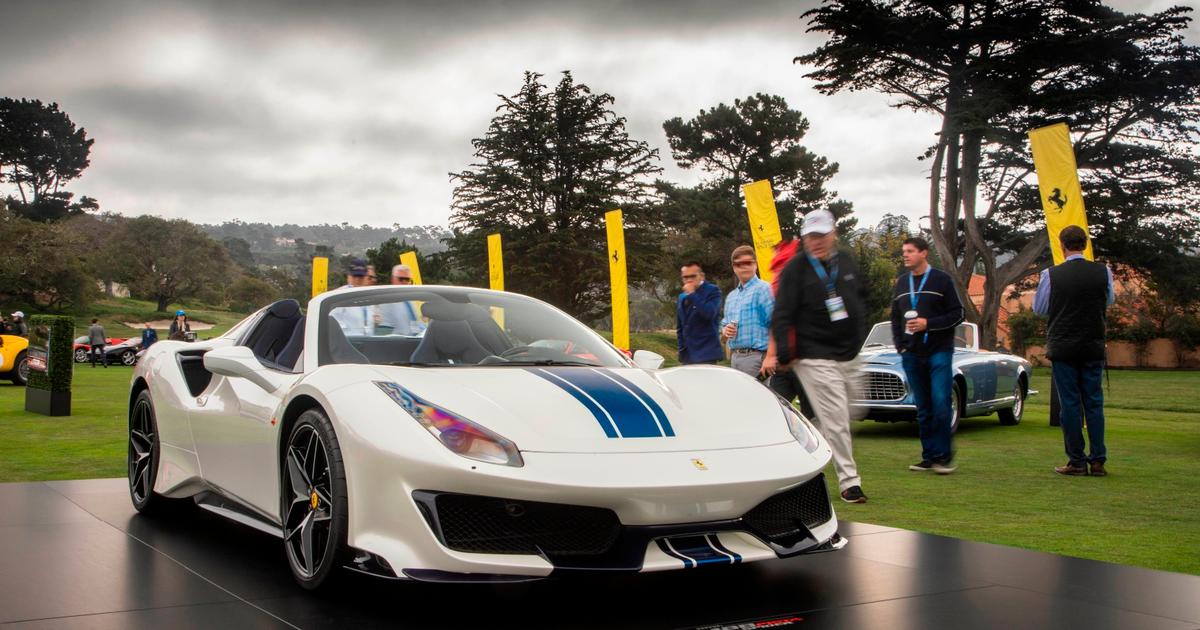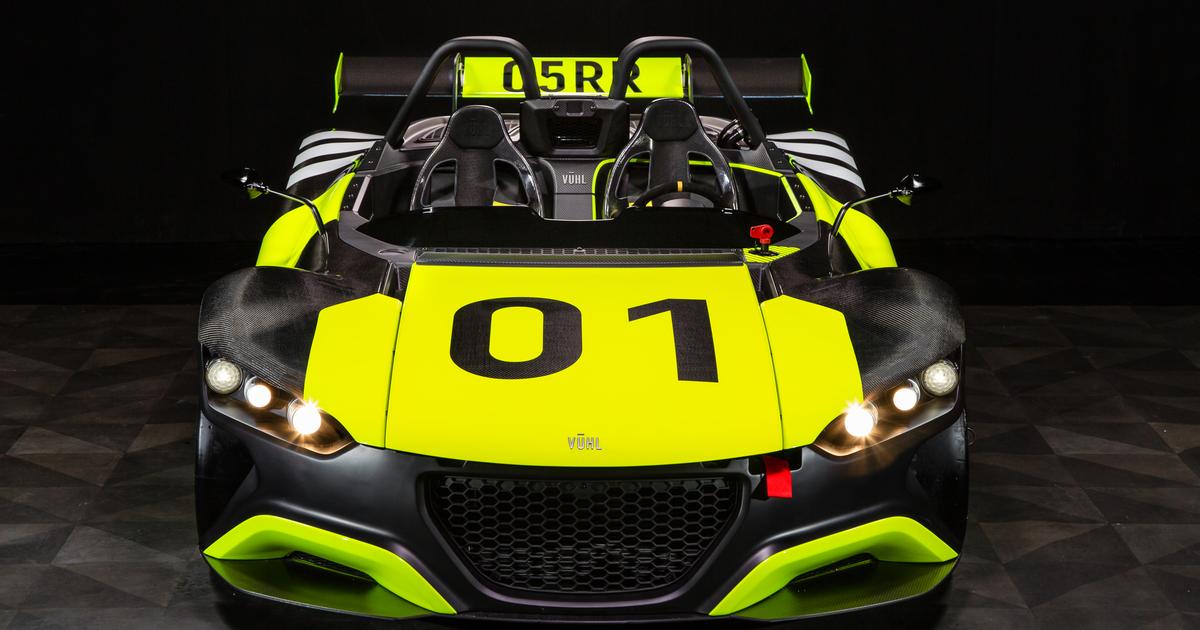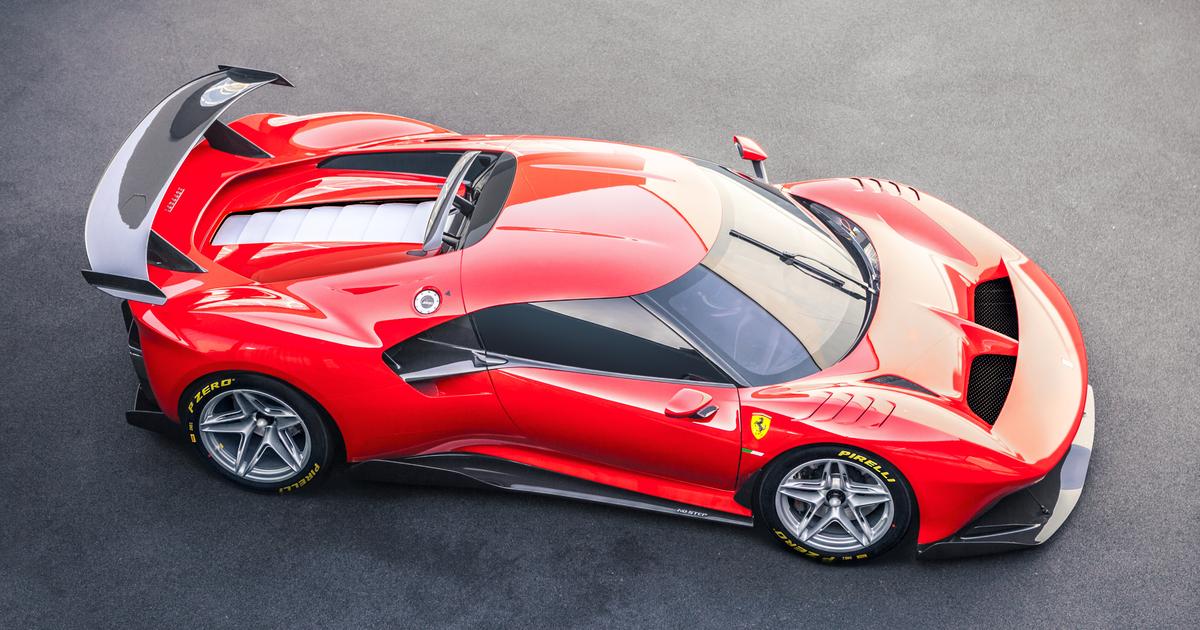The iconic Ferrari 250 Testa Rossa reigns as one of the most beautiful creations the industry has ever seen. The Ferrari 250 Testa Rossa, or 250 TR, was introduced at the end of the 1957 racing season in response to rule changes that enforced a maximum engine displacement of 3 liters for the 24 Hours of Le Mans and World Sports Car Championship races.

Success on track
The 250 TR achieved many racing successes, with variations winning 10 World Sports Car Championship races, including the 24 Hours of Le Mans in 1958, 1960, and 1961, the 12 Hours of Sebring in 1958, 1959 and 1961, the Targa Florio in 1958, the 1000 Km Buenos Aires in 1958 and 1960 and the Pescara 4 Hours in 1961. These results led to World Sports Car Championship constructors’ titles for Ferrari in 1958, 1960, and 1961.
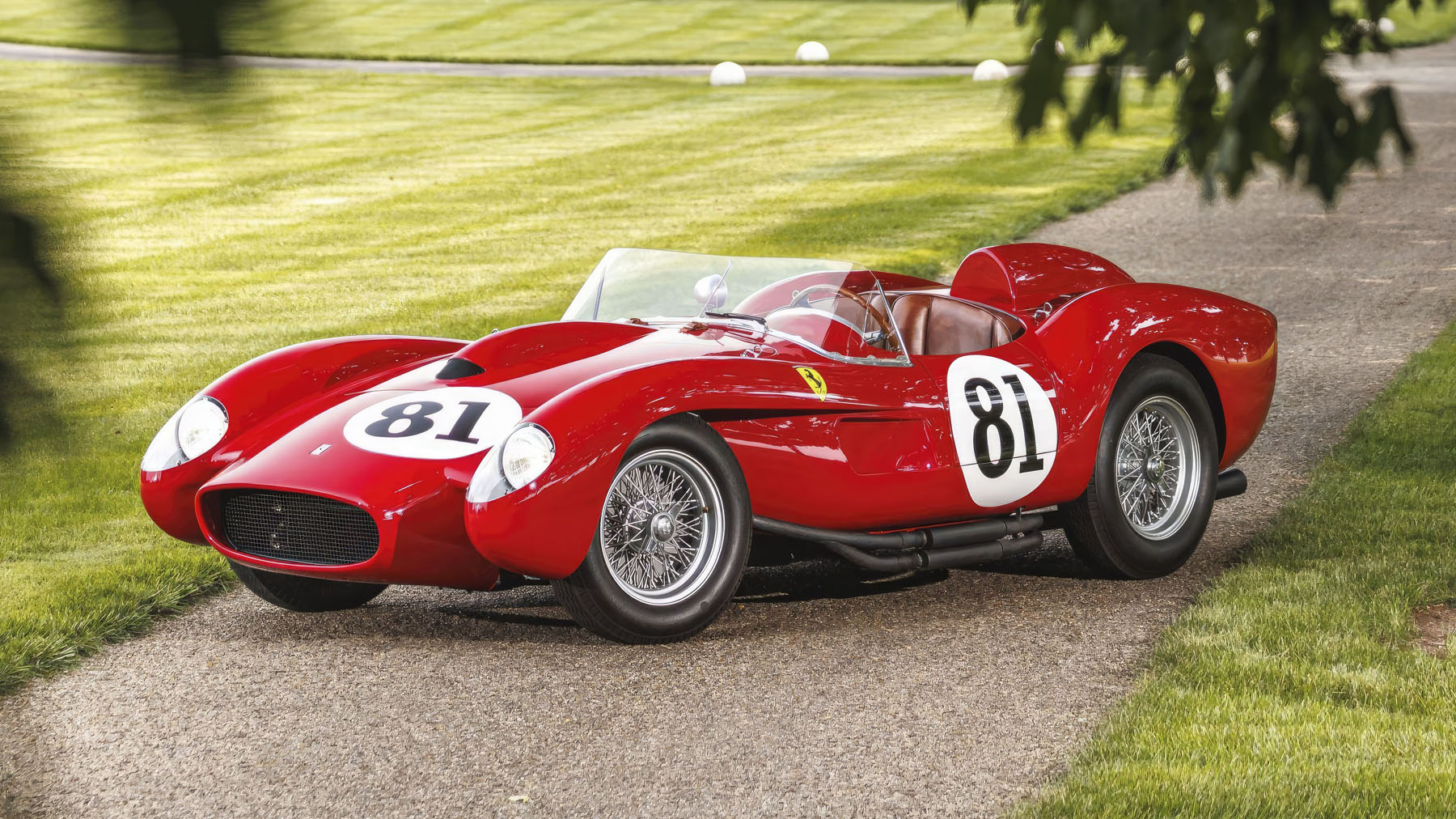
Limited production
In total, thirty-three 250 TRs of all types were built between 1957 and 1962. Included in this total are 19 “customer versions” of the 250 TR sold to independent racing teams. All customer cars had left-hand drive Scaglietti “pontoon fender” bodies and live rear axles. They did not benefit from the continual improvements to Scuderia Ferrari cars, although many independent teams modified their 250 TRs or purchased ex-Scuderia Ferrari cars in order to stay competitive.

Engine
The 250 Testa Rossa engine was based on a Colombo-designed 3.0L V12 used in 250 GT road and racing cars. No less than six two-barrel Weber 38 DCN carburetors were used to mix air and fuel. The cylinder heads used single overhead cams, two valves per cylinder, and helical double-coil valve springs (a first for Ferrari). The helical valve springs were much smaller than previously used torsion springs, allowing the cylinder heads to be strengthened and secured with 24 studs rather than 18 in the previous 250 engines. The cam covers were painted bright red, the source of the name “Testa Rossa” (literally, “Red Head”). This tradition and name originated with the 500 TR.
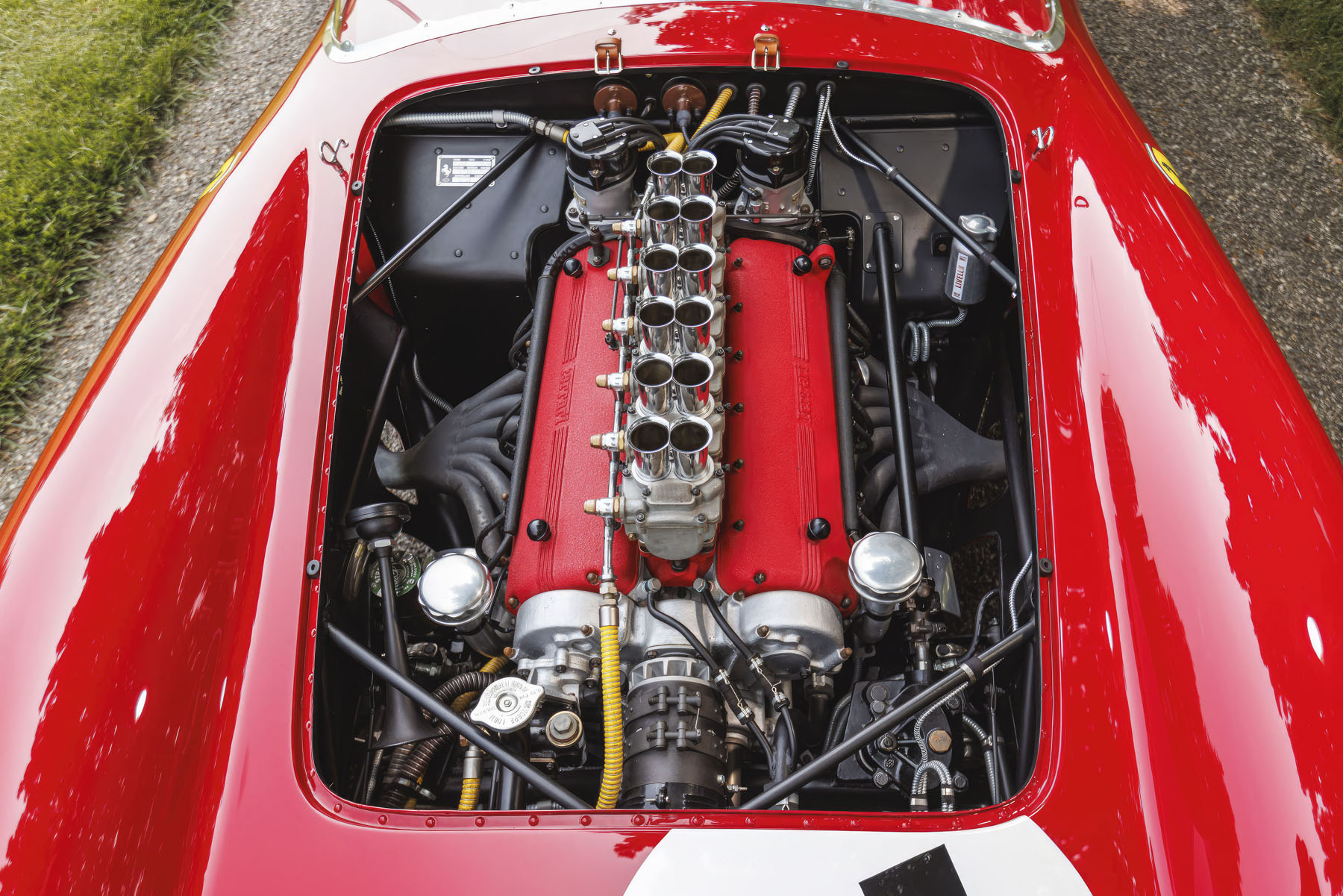
Chassis, brakes and suspension
The 250 Testa Rossa used a tubular steel spaceframe chassis similar to that used in the 500 TR. All 250 TRs used independent front suspension with coil springs. All customer cars had live rear axles. Pre-1960 factory team cars used either live or de Dion rear axles, while the 1960 250 TRI60 and 1961 250 TRI61 used independent rear suspension.
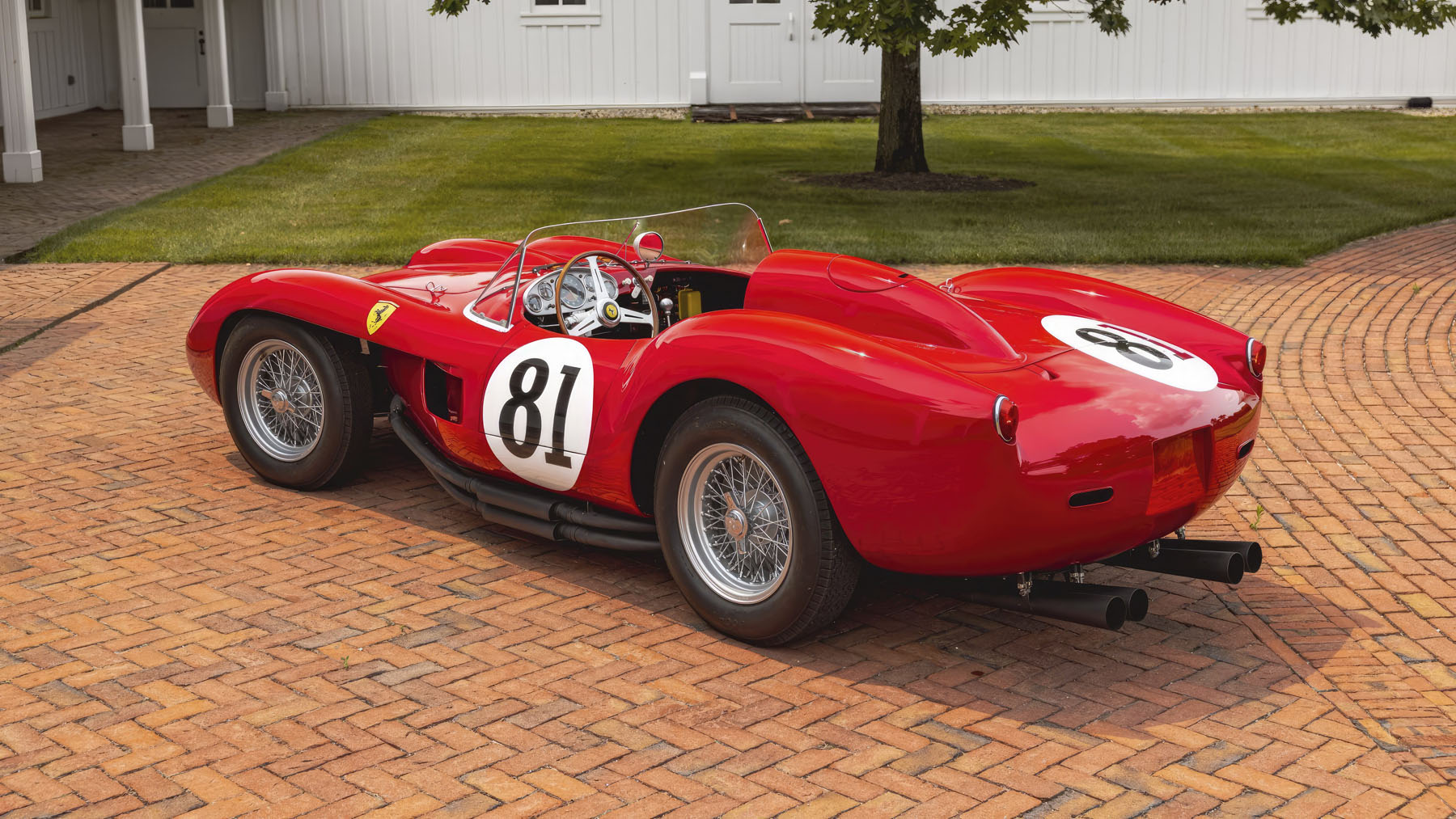
1957 and 1958 250 TRs were equipped with drum brakes on all four wheels. Enzo Ferrari insisted on the use of drum brakes in the early 250 TRs as he believed they were more reliable and predictable in how they faded compared to more powerful but relatively new disc brakes. Drum brakes were unpopular with drivers as they required tremendous physical exertion to operate due to the lack of servo assist and the extremely hard, long-lasting pads used for endurance races. Despite the extensive air cooling used in the 1958 “pontoon fender”-bodied cars, drum brakes were still subject to heat-induced fade and were finally replaced with Dunlop disc brakes in all Scuderia Ferrari cars for the 1959 race season.
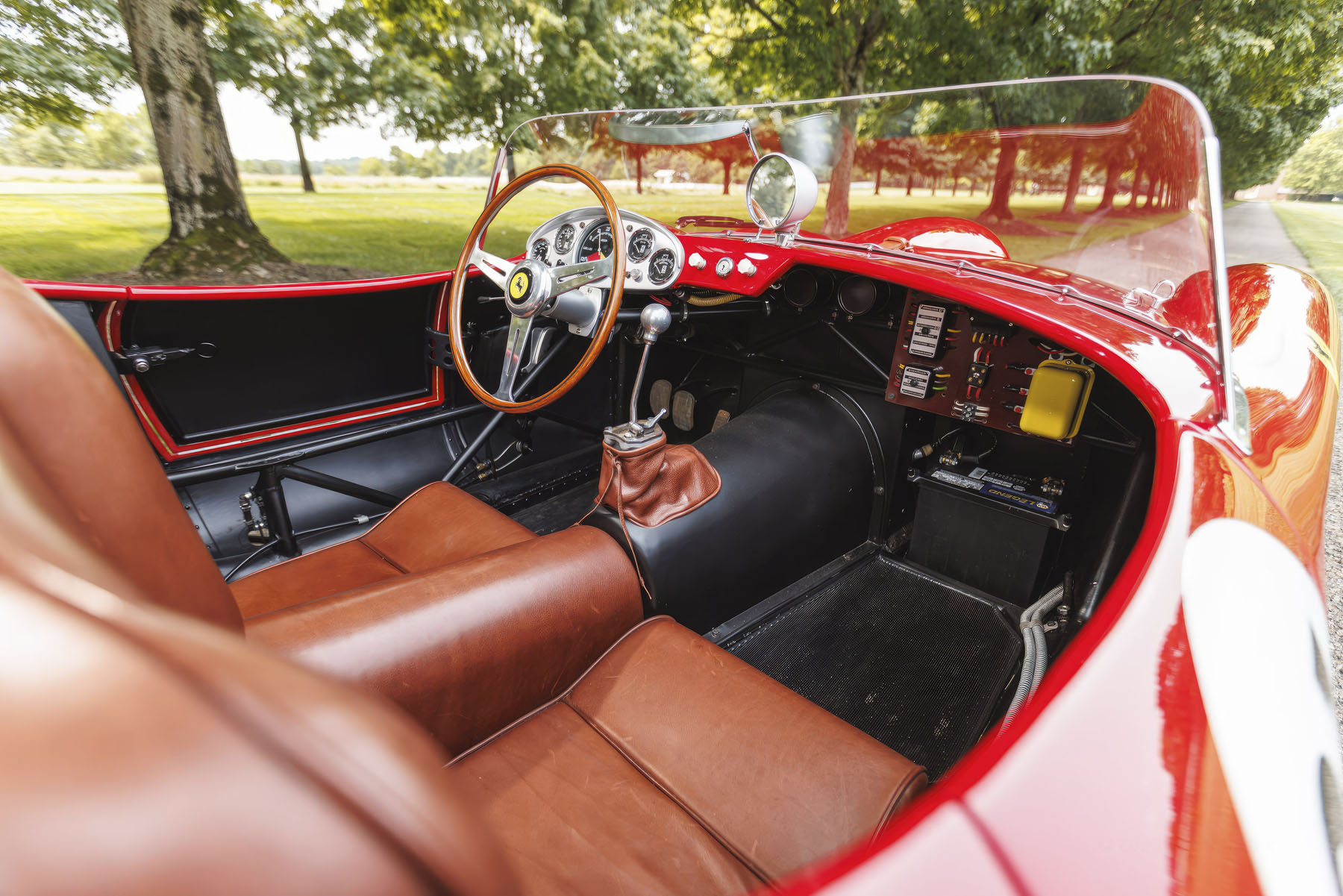
Bodywork and interior
For the 1958 250 TR, new bodywork was developed in collaboration between Scaglietti and Chiti with several innovations on the previous 4-cylinder Testa Rossa body. Instead of the conventional fully enclosed front end, the new body had a distinctive cut-away nose reminiscent of a Formula 1 car. The protuberant central air intake was now flanked by deep channels and the headlights were set into nacelle- or pontoon-like fenders that enveloped each front wheel. The purpose of this design was to funnel cooling air inwards towards the brake drums, mitigating the persistent problem of heat-related fade. The lower body was recessed inwards behind the front wheels to vent heat from the brakes and exhaust.
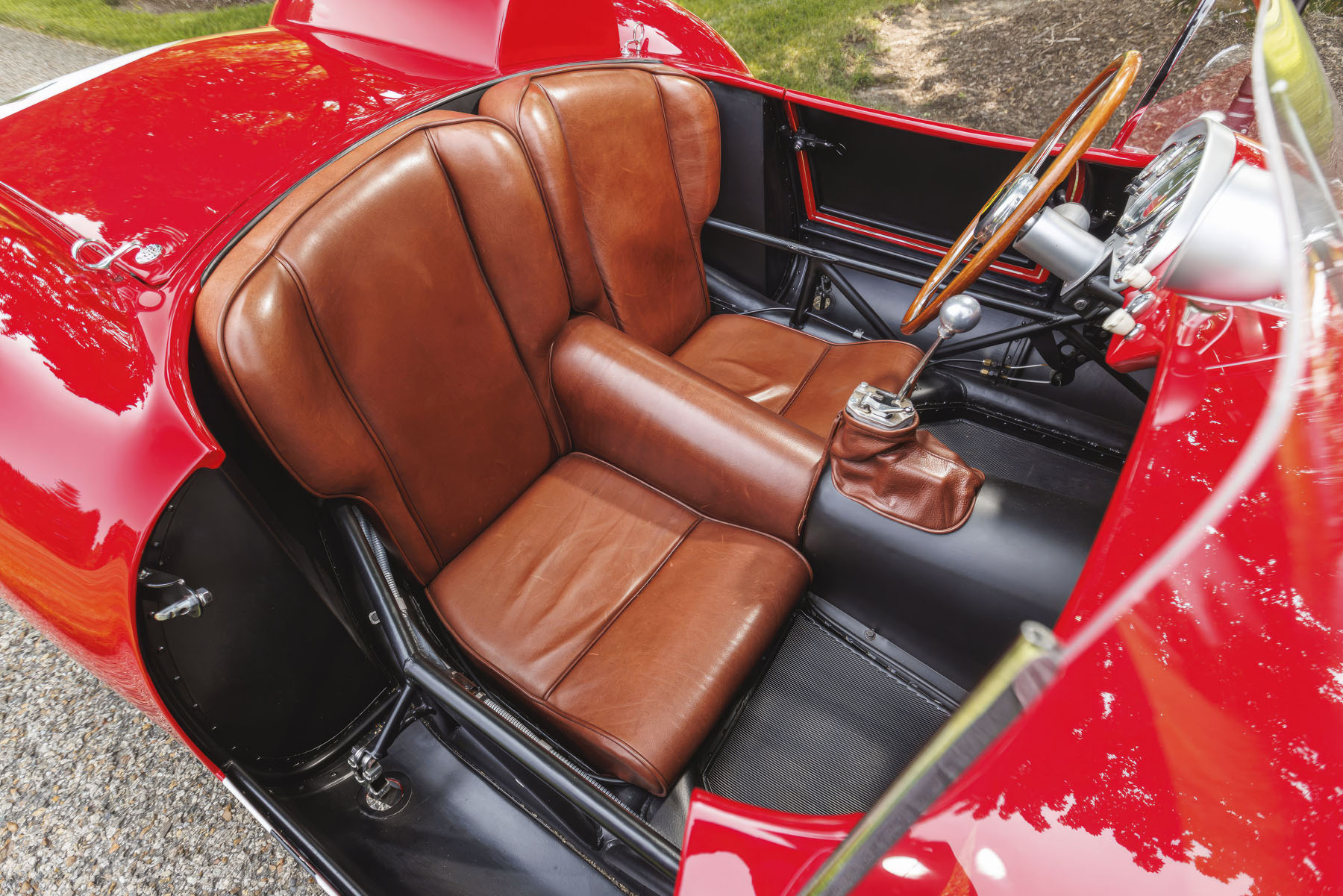
The distinctive cutaway-nose bodywork of the 1958 cars became the most iconic 250 TR style and was used on all cars sold new to private customers. This resulted in the colloquial name for early Scaglietti-bodied 250 TRs: “pontoon fender.” Despite their radical appearance, racing and test runs soon showed that this design generated a significant amount of aerodynamic drag and high-speed instability. This was especially noticeable when competing on high-speed courses such as the Circuit de la Sarthe against more aerodynamic cars such as the Maserati Tipo 61 and Jaguar D-Type. As a result, the Scaglietti bodywork was soon revised and various alternative styles were created from 1958 through 1961. Even during 1958, some Scuderia Ferrari cars were equipped with more conventional bodies in the style of the 1957 prototype.

Now available
This particular 250 Testa Rossa, chassis no. 0738 TR, is one of only 19 special examples bodied by the renowned Italian coachbuilder Sergio Scaglietti. With nearly 20 period races and four overall victories, 0738 TR was active in competition for over a decade. In recent years, it has benefited from a full restoration at Ferrari Classiche, where it was granted full Red Book Certification. It is one of few TRs retaining its matching engine and gearbox.


With a valuation between $34,000,000 and $38,000,000, this automobile is surely destined for the world’s most distinguished collections. To ensure discretion and confidentiality, we are hosting this exclusive event through Sotheby’s Sealed, allowing clients to bid competitively in a private setting. The auction will take place 21-23 February via Sotheby’s Sealed.
For more information on this exceptional offering, please go HERE
All content © 2024 Sotheby’s Sealed
